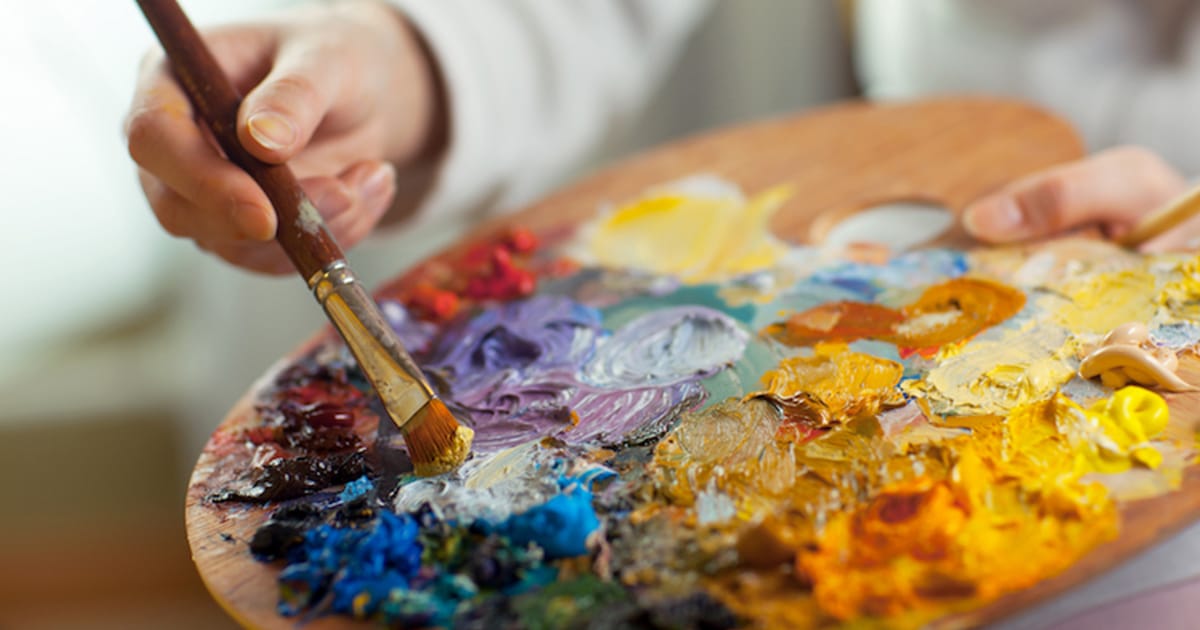Painting, an ancient art form that has captivated humanity for centuries, transcends mere strokes of color on canvas. It embodies emotion, expression, and the very essence of the human experience. From the earliest cave paintings to the digital masterpieces of today, painting has evolved and adapted, yet its power to evoke emotion remains unchanged.

The Evolution of Painting Throughout History
Prehistoric Paintings
In the depths of prehistory, our ancestors communicated their stories and beliefs through primitive paintings on cave walls. These ancient artworks, such as those found in the Lascaux caves of France, offer a glimpse into the minds and lives of early humans.
Ancient Civilizations and Early Art
As civilizations flourished, painting became more refined, with ancient cultures like the Egyptians and Greeks leaving behind intricate murals and pottery adorned with vibrant designs.
Renaissance and the Birth of Modern Painting
The Renaissance marked a turning point in art history, as painters like Leonardo da Vinci and Michelangelo ushered in a new era of realism and perspective. This period laid the foundation for the diverse styles and techniques that would follow.
Styles and Techniques in Painting
Realism
Realism, characterized by its meticulous attention to detail and faithful representation of the natural world, emerged as a dominant artistic movement in the 19th century.
Impressionism
Impressionism challenged traditional notions of painting, emphasizing the fleeting effects of light and color rather than precise realism. Artists like Claude Monet and Edgar Degas captured the essence of a moment with loose, expressive brushwork.
Abstract Art
In the 20th century, abstract art pushed the boundaries of perception, exploring shape, color, and form in innovative ways. Pioneers like Wassily Kandinsky and Jackson Pollock liberated painting from representational constraints, inviting viewers to interpret and engage with the artwork on a deeply personal level.
Famous Painters and Their Impact
Leonardo da Vinci
Leonardo da Vinci, the quintessential Renaissance man, revolutionized the art world with his mastery of painting, sculpture, and invention. His iconic works, such as the Mona Lisa and The Last Supper, continue to inspire awe and admiration centuries later.
Vincent van Gogh
Vincent van Gogh’s tumultuous life and bold, expressive style have made him one of the most renowned painters in history. Despite his struggles with mental illness, he created masterpieces like Starry Night and Sunflowers that resonate with audiences worldwide.
Pablo Picasso
Pablo Picasso’s avant-garde approach to art shattered conventions and redefined the possibilities of painting. His groundbreaking works, including Guernica and Les Demoiselles d’Avignon, reflect his restless creativity and profound influence on modern art.
The Role of Painting in Society
Expression and Emotion
Painting serves as a powerful outlet for emotional expression, allowing artists to convey their innermost thoughts and feelings through color, composition, and symbolism.
Reflection of Culture and Values
Throughout history, painting has mirrored the cultural zeitgeist, capturing the beliefs, values, and aspirations of societies around the world.
Influence on Other Art Forms
The influence of painting extends beyond the canvas, shaping literature, music, film, and fashion. From the haunting landscapes of the Romantics to the bold abstractions of the Abstract Expressionists, painters have inspired generations of creators across disciplines.
The Therapeutic Power of Painting
Stress Relief
Engaging in painting can provide a much-needed respite from the stresses of daily life, allowing individuals to immerse themselves in the creative process and find solace in self-expression.
Self-Expression and Healing
For many, painting serves as a form of therapy, offering a means of processing emotions, confronting inner demons, and fostering personal growth and healing.
Community and Connection
Painting has the unique ability to bring people together, fostering a sense of community and connection through shared creative experiences. Whether in a classroom, studio, or online forum, artists find kinship and support in their fellow creators.
Painting in the Digital Age
Digital Art and Virtual Painting
The advent of digital technology has opened up new possibilities for artistic expression, with digital painting software enabling artists to create stunning works of art on virtual canvases.
Social Media and Online Communities
Social media platforms like Instagram and Pinterest have democratized the art world, providing artists with unprecedented exposure and opportunities to connect with audiences worldwide.
Challenges and Opportunities
While the digital age has brought new opportunities for painters, it has also posed challenges, from issues of copyright and intellectual property to the commodification of art in the online marketplace.
Conclusion
In conclusion, painting remains a timeless and universal form of expression, weaving together the threads of emotion, history, and culture into vibrant tapestries of creativity. Whether gazing upon a masterpiece in a museum or picking up a brush to create one’s own work of art, the power of painting to move, inspire, and connect us transcends the boundaries of time and space.
FAQs
- Is painting only for professional artists? No, painting is for everyone! Whether you’re a seasoned pro or picking up a brush for the first time, painting offers a rewarding creative outlet for people of all skill levels.
- What materials do I need to start painting? All you need to get started is some paint, brushes, and a surface to paint on, such as canvas or paper. Experiment with different mediums and techniques to find what works best for you.
- I’m not very good at drawing. Can I still paint? Absolutely! Painting is about expression, not perfection. Don’t be afraid to embrace imperfection and let your unique style shine through in your artwork.
- How can I improve my painting skills? Practice, practice, practice! Set aside time regularly to paint and experiment with new techniques. You can also take classes or workshops to learn from experienced artists and expand your skillset.
- What are some famous paintings I should know about? There are countless iconic paintings throughout history, from the mysterious smile
